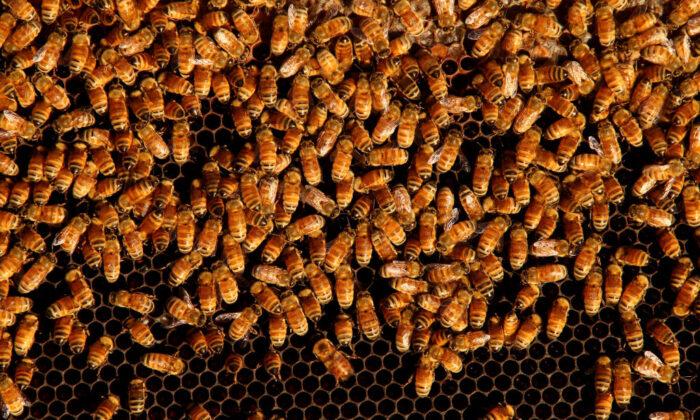A chemical waste company in Melbourne, Australia, has been hit with almost $3 million (US$2 million) in fines after an enormous industrial fire broke out and left a worker hospitalised in April 2019.
The chemical waste recycling company Bradbury Industrial Services Pty Ltd operated multiple solvent waste processing and recycling facilities in Melbourne’s north since 2006. On April 5, 2019, their Thornycroft Street, Campbellfield, warehouse went up in flames and burned for several days.
A total of nine charges were handed to Bradbury for failing to take precautions to prevent fire or explosion, contravening a license condition, creating environmental hazards, and workplace safety charges.
Causes of Inadequate Training
The fire started after an employee decanted Toluene from a 1000-litre industrial-grade container or intermediate bulk container (IBC) into a 60-litre drum.Toluene is classified as a Class 3 Dangerous Good, and a “static accumulator,” meaning it is susceptible to a build-up of electrostatic charge for a long period. It is a clear, colourless liquid that becomes a vapour when exposed to air at room temperature.
Toluene is naturally found in crude oil that is used in oil refining and is commonly found in the manufacturing of paint pigments, lacquers, inks, stain removers, and glues.
The employee had been shown how to decant chemicals, including using pumps and ‘L clamps,’ and was also aware of the risk of fire when handling dangerous goods. However, the employee was not aware that static could cause a fire and was never taught to earth containers before filling them.
In the CCTV footage shown in court, it showed that when the employee poured toluene from the IBC into the drum from a bulk container that was held by a forklift, the IBC was not earthed and there was no earthing strap between the drum and the IBC.
Shortly after the decanting process started, there was a large flash, and a fire began to burn quickly and spread out of control, resulting in the warehouse being destroyed.
The employee was taken to the Alfred Hospital, where he spent three days in hospital after sustaining burns to his face and throat, and also sustaining a shoulder injury.
During his statement at court on June 3, he said he struggled with sleep and the ongoing effects of the fire and has had to seek help from “psychologists and doctors.”
Impact on Local Communities
The industrial fire was so big it was attended by large numbers of firefighters and took four days to extinguish.Nearby schools and businesses were required to evacuate and close down during that time due to the polluted smoke.
The clean-up operation was led by Environment Protection Authority (EPA) Victoria, where nearly 6,000 tonnes of waste were removed from the site, including about 2,000 tonnes of recycled concrete.
Prior Environmental Breaches
Only a few weeks before the incident on March 13, 2019, EPA-authorised officers inspected the Campbellfield warehouse to sample and calculate the volume of liquid waste stored there.Under the EP (Environment Protection) Act, Bradbury was prohibited from storing more than 154,000 litres of liquid waste at the premises.
However, the EPA found approximately 450 completely or partly filled 1,000-litre IBCs containing burner fuel and other liquid waste at the premises that would have exceeded the permitted amount by the license.
In another Bradbury warehouse at Brooklyn Court, Campbellfield, even more dangerous Class 3 flammable liquids were found stored by WorkSafe inspectors on Jan. 31, 2019. Some of the IBCs were showing signs of damage, including swollen or leaking containers, and the total quantity of the products was estimated to be more than two million litres.
Other warehouses were in a similar state, with some containing three to nine million litres of chemicals and some even stacked four-high.
“It does not take a great deal of imagination given that evidence to contemplate the likely impact of a fire at one of the five premises the subject of the Dangerous Goods (DG) Act breaches,” Judge Rozen said.
“Such an employer would be expected both ‘to have knowledge of the hazards and risks associated with,’ such a task having regard to the nature of its business and to take every reasonably practicable precaution open to it to eliminate those risks.
“The risk is not only obvious but extreme.”
Importance of Work Safety
WorkSafe’s investigation found Bradbury had inadequate or nonexistent fire protection, spill containment, and ventilation systems, as well as potential ignition sources such as switchboards, lighting and forklifts.WorkSafe executive Narelle Beer said the fire was an example of the consequences of ignoring safety requirements, especially when working with dangerous goods, and the importance of providing the training, information, instruction, and supervision necessary for employees.
“The sheer volume of hazardous chemicals at Bradbury’s other sites and the unsafe way in which they were stored posed significant risk to workers and the surrounding communities.
“There is no excuse for such blatant disregard for workplace safety.”





